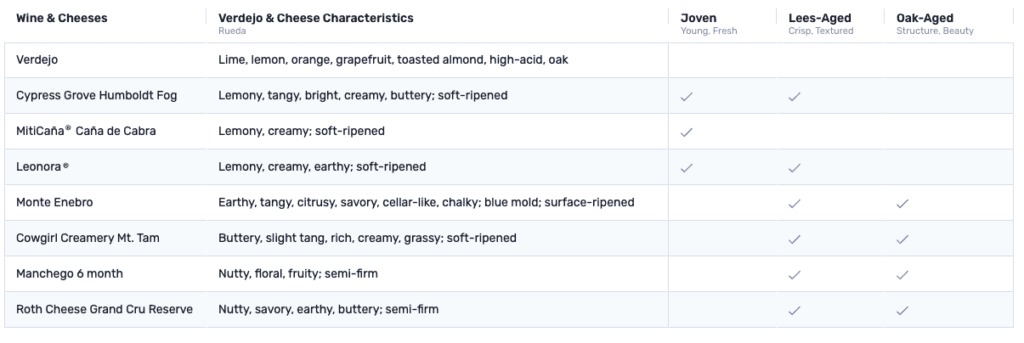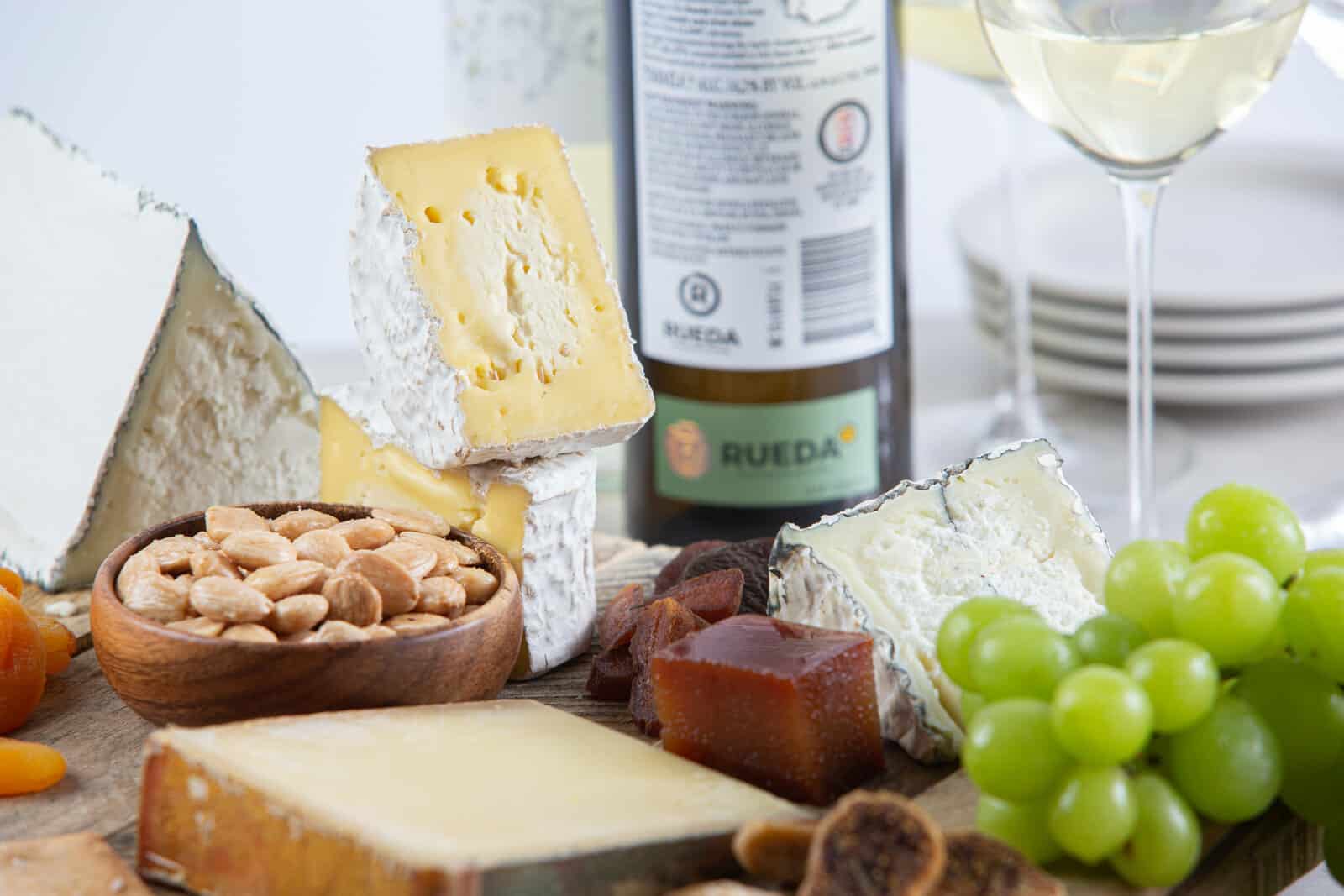
Red, white, Spain — and blue too. That’s almost all you need to remember when it comes to pairing cheese with its perfect Spanish wine partners. The “almost” part is the fact the wines are not just any Spanish red and white wines. Instead, we’re talking Tempranillo from Ribera del Duero and Rueda’s premier white wine, Verdejo. Both wines say cheese every time.
Part of this has to do with the many styles of Verdejo and Ribera del Duero-grown Tempranillo (also known as Tinta del Pais and Tinto Fino in this region). Those styles are the result of the variety of soils, higher altitudes, and extreme climate in the two regions.
Verdejo-style
Verdejo has three main styles – joven, lees-aged, and oak-aged.
Joven means young in Spanish and in the case of Verdejo, translates to approachable, light, bright-acid wines with hints of grapefruit, lemon, and lime. Think pinot grigio and sauvignon blanc with a Spanish accent.
Lees-aged means the wine spends time on the spent yeast cells called lees. In turn, this takes the wine in a creamy direction giving it more body. The acidity of the grape remains, and in concert with the rich mouthfeel, inches into Chablis-like territory.
Oak-aged is just that. The wines spend some amount of time in oak barrels or casks, and while not oaky, take on some of the spice and broadness on the palate that only oak can create. This oak aging is also a testament to the versatility of Verdejo. Very few white grapes can be released both young and aged — usually, it’s one or the other. Not Verdejo, which excels at all ages and stages.
In addition to being a super sippable wine, Verdejo sidles up to cheese like a cowboy to a saddle. It’s a natural pair. Whether from Spain or the United States, cheeses of all kinds find comradeship with the many styles of Verdejo.
Verdejo, meet goat cheese
Humboldt Fog is a prime example. Made by the company Cypress Grove in Arcata, California, this iconic American goat cheese is possibly the most wine-friendly cheese of any made in the world. It’s somewhat lemony but not too much. It’s earthy but not goaty. It’s creamy and mouth-filling, yet it’s light and bright. In other words, the characteristics of this cheese are the same as many you find in Verdejo.
The same is true for MitiCaña® Caña de Cabra and Leonora®, two of Spain’s excellent goat cheeses. Like Humboldt Fog, both cheeses fall in the soft-ripened cheese category, meaning that the cheese gets softer just under the white bloomy rind as it ages. These too have lemony flavors and creaminess on the palate. Because of their bright flavors yet lingering mouthfeel, this style of cheese takes to the joven and lees-aged styles of Verdejo particularly well.
Just to button up the Spanish goat cheese category, the relatively rare Monte Enebro finds harmony with all styles of Verdejo and – bonus – some Tempranillos too. Its earthiness and thin blue mold on the exterior ensure this. In other words, try both!
Cream and the crop
Because of Verdejo’s flavor and textural range, goat cheeses aren’t its only cheese pals. So too triple-creams. Take Cowgirl Creamery’s Mt. Tam. A little firmer than most triple-cream cheeses, this cheese is like butter in cheese form with an ever so slight tang on the finish. It’s almost as if the cheese knows it’s so rich it had better tame itself by ending on a high note.
The best wines are the same – proper acidity to balance the richness and fruit.
In Verdejo-speak, a lees- and oak-aged version loves the butteriness in a cheese-like Mt. Tam. It also has the proper acidity to balance the cheese’s richness. Call it anything you want — yin-yang, cream-to-my-coffee, salt-in-my-stew – but what’s clear is that a richer style Verdejo and a cheese like this one are, well, two peas in a pod.
Firmly in the Verdejo camp
Soft, creamy, and buttery cheeses aren’t Verdejo’s only friends. The lees- and oak-aged versions also pair with 6-month aged Manchego (Spain’s unofficial national cheese) and Wisconsin’s Roth Cheese Grand Cru Reserve – a close cousin of Swiss Gruyére. While Manchego is made with sheep’s milk and Grand Cru Reserve with cow’s milk, they both share a nuttiness and long finish. They’re also rich. Bring on the lees and oak-aged Verdejo, whose acidity will refresh the palate and whose medium-bodied texture will hold its own in the presence of the sturdy cheeses.
A happy marriage
If white wine and cheese isn’t your thing, then Ribera del Duero Tempranillo and cheese will be. This region’s Tempranillo runs the flavor gamut from fruity and immediately approachable to complex, balanced tannins, acidity, herbaceousness, and dark fruits. This range of flavors and medium- to full-bodied texture ensures there’s a cheese for pretty much every style and age of Ribera del Duero Tempranillo.
Like Rueda Verdejo, Ribera del Duero Tempranillo is made in many different styles, from young to aged. The official classifications go like this:
Crianza: The youngest of the three classifications, Crianzas are aged a minimum of 24 months with no less than one year in oak. These wines generally have brighter red fruit flavors, maybe a little black fruit too, and fresh flavors that come from the higher acid.
Reserva: Reservas are aged a minimum of 36 months of which at least 12 months are spent in oak and the rest of the time in the bottle. Reserva wines tend to be more dark fruit-focused rather than the brighter red fruits in Crianzas, the oak is more pronounced, and the structure and tannins are firmer.
Gran Reserva: These are “gran” for a reason. For one, they are aged a minimum of five years. At least two of these years are in oak and the rest of the time is in bottle before release. The fruit in Gran Reservas is dark, sometimes compote-like, the oak structure is more prominent as are the oak spices, and the overall complexity of the wine is greater.
Cosecha: In addition to Crianza, Reserva and Gran Reserva, Ribera del Duero and Rueda wines include the category of Cosecha. This classification is hard to define, which is just how the winemakers would like it. Like Rueda Verdejo, Cosechas may be classified as Joven – young and usually unoaked; oaked — wines that are in oak for at least three months; and basically, a motley crew of other wines that don’t meet the specifications of the other three categories. Perhaps surprisingly, some of the most heralded wines in the Ribera del Duero are Cosechas.
Given that Cosechas don’t fall neatly into one category or another, pairing cheeses with them can be a wild ride – in a good way. The same principles of pairing Ribera and Rueda wines with cheese hold true with Cosechas, but finding the just-right pairings requires two things. The first is research. What style is the Cosecha? Where is it grown specifically? The soil type and climate may provide a window into the style. Are there details about the wine on the winery’s website or in reviews?
Second, there’s no substitute for tasting the wine. Once that happens, discovering its best cheese partners becomes a whole lot easier. Did we say fun?
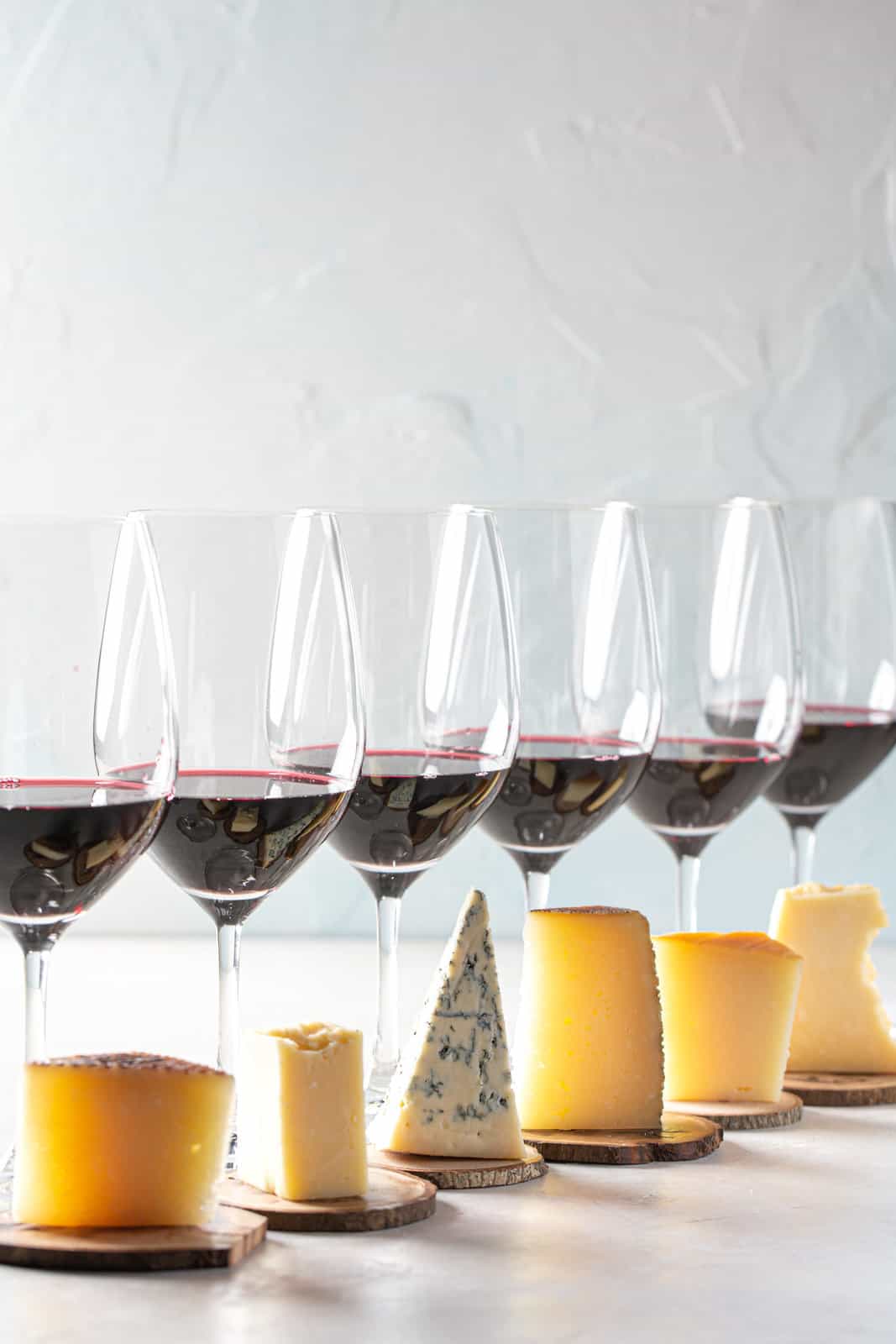
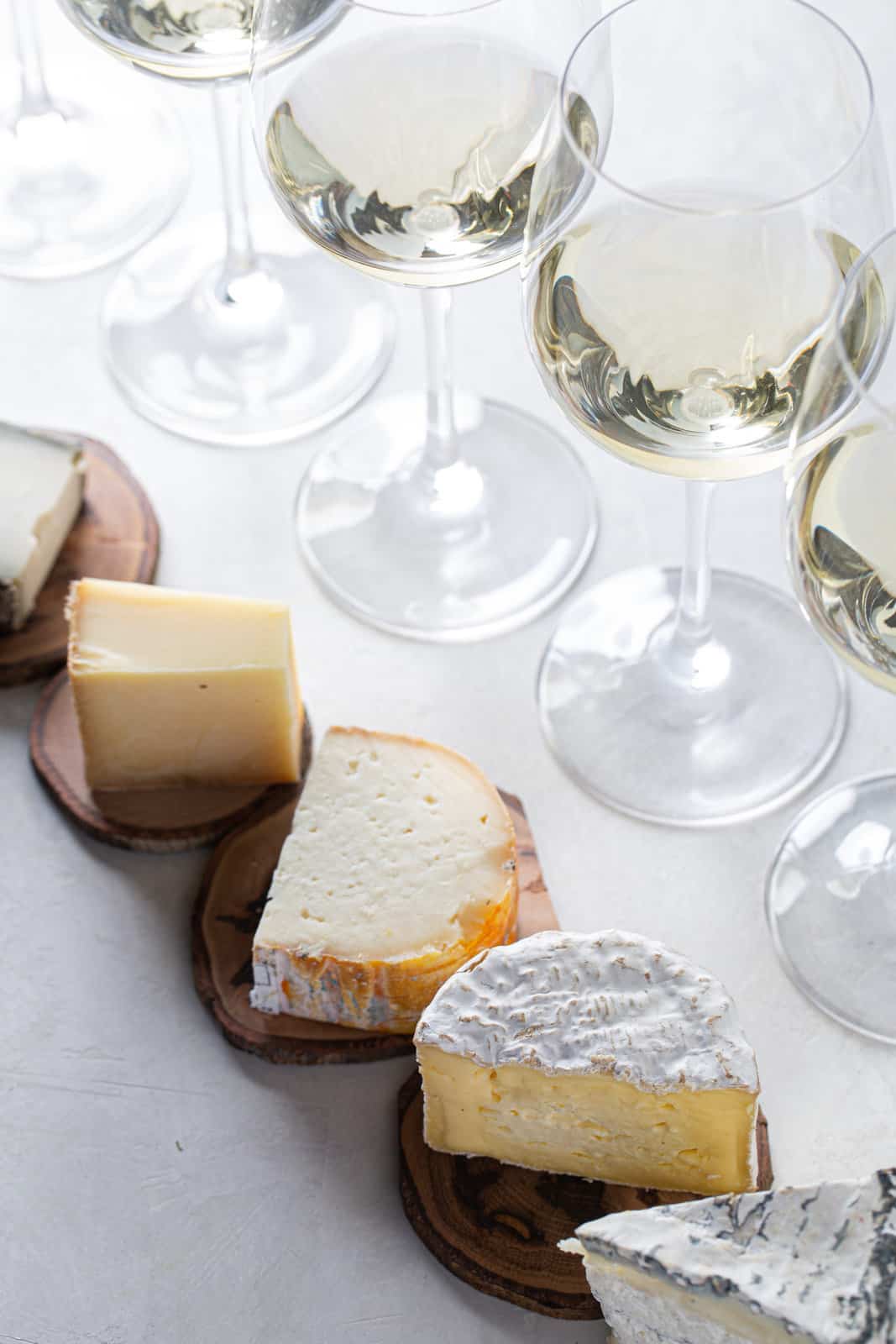
Opposites attract
Given the many styles of Ribera del Duero Tempranillo, it comes as no surprise that it has a lot of friends in cheeses. When it comes to one of the grape’s better cheese companions, look no further than Spanish Mahón Reserva. Made in a part of Spain diagonally opposite from Ribera del Duero, this cow’s milk cheese hails from the scenic island of Menorca off the southwest coast of Spain. The cheese, distinctive because of its square shape with slightly rounded corners and bright orange pimentón-rubbed rind – is aged about a year. In that time, it develops nutty, piquant, and even sweet flavors.
With cheese, age comes wisdom, and because of that, Mahón has enough personality to stand up to the earth and fruit in Tempranillo but not so much that it dominates. The semi-hard texture of the cheese takes the pairing a step further by providing a textural contrast with the smooth, almost silky, body of the wine.
Also opposite, in this case in flavor, not geography, is the matching of Tempranillo and blue cheese. This can be tricky because you don’t want too powerful a version of the wine – one that’s high on the oaky side or particularly acidic. In both cases, most blue cheeses will exaggerate those characteristics, which are essential to great wine but best when in balance. But when you find the right blue – one that’s a little earthy, low on the pungent scale, has balanced salt, and a medium-creamy texture, well, that’s a whole other story.
For instance, Point Reyes Farmstead Cheese Company in Point Reyes, California, churns out the exceptional Bay Blue – a Stilton-like cheese that’s not only delicious on its own but also happens to go perfectly with a medium-bodied, fruit-forward Tempranillo. Its earthy, fudgy, toasted nut, and sweet finish ensure this. Stronger, more pungent, and in some cases, gamy blue cheeses are best paired with dessert wines.
Counting sheep
Maybe some of the most natural cheese pairings for Tempranillo are sheep’s milk cheeses. Like Tempranillo, most sheep’s milk cheeses have a pronounced tang primarily on the finish. In addition, they are often rich, have just-right salt, are a bit grainy (in a good way), and balanced.
Take Idiazabal. Hailing from the Basque country, this semi-hard sheep cheese with a hint of smokiness loves red wine, red fruit – basically anything called Tempranillo from the Ribera del Duero. It makes for a great after-dinner/before-dessert cheese course, but really – it’s good anytime, anywhere.
And then there’s Zamorano. Ribera del Duero and Rueda are part of Spain’s largest so-called autonomous region – Castilla y León. So too is Zamora, home of its namesake cheese. This raw sheep’s milk beauty is often compared to Manchego but it is made with the milk of different sheep breeds than Manchego. This is one of its main points of distinction. The result is a cheese with nutty, fruity, buttery, and sweet tones. It’s one of the most delicious, balanced sheep’s milk cheese made anywhere in the world, not just Spain.
Given Zamorano’s regional provenance, it should come as no surprise that Tempranillo is its natural wine partner. But it isn’t just that it follows the axiom, “What grows together, goes together.” It’s also that Tempranillo’s darker fruit and bright acidity are the perfect foil for the uber-rich, buttery, and tangy cheese. Think sweet-savory.
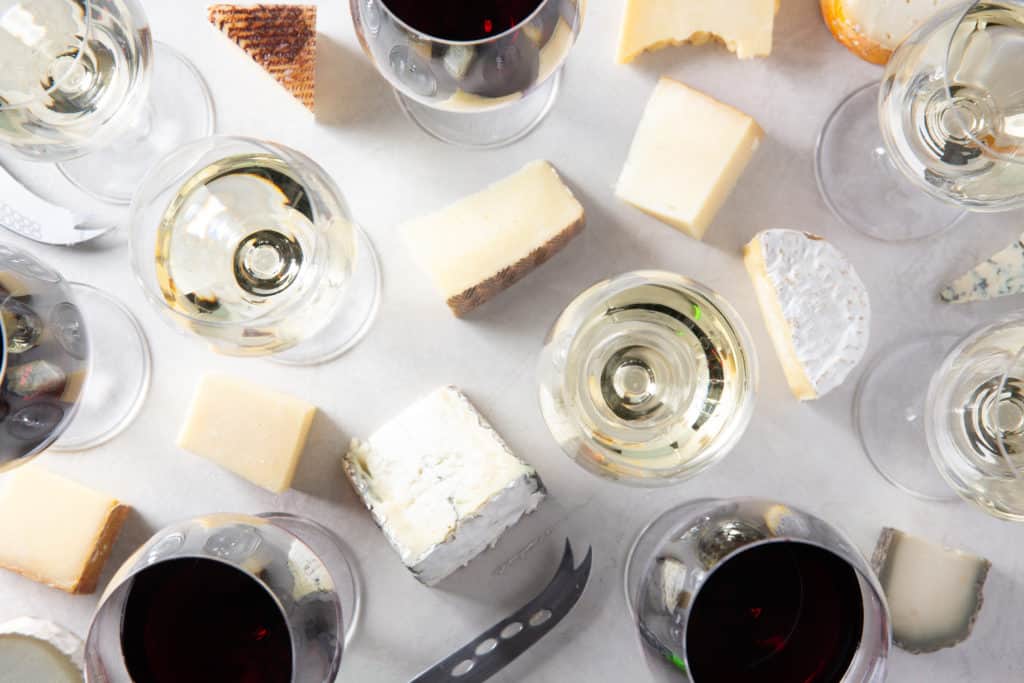
Cross cultures
Tempranillo that’s grown along the banks of the Duero River is as natural as the cheddar that comes from Vermont. While that doesn’t necessarily mean the wine and cheese should go together, it so happens that in this case, they do. Really well, in fact.
In particular, the cheese called Cabot Clothbound, made by Cabot Creamery in Cabot, Vermont, and aged at the Cellars at Jasper Hill in Greensboro, Vermont, is the perfect mate for Tempranillo. The cheese’s earthy notes find the same element in the Tempranillo, particularly the Reserva and Gran Reserva classifications, and the sweet protein crystals in the cheese love the fruit in the wine.
The same could be said about Beecher’s Flagship cheese. Never mind the fact it’s made in New York and Seattle, not Vermont. The result is a cheese that’s often described as a cross between cheddar and Gruyére, which is kind of hard to imagine until you taste it. The Gruyère-like flavors lend a sweet nuttiness to the 15-month aged cheese and the cheddar element is savory, slightly brothy, but also sweet. Enter Tempranillo – the Reserva and Gran Reserva especially – whose fuller-bodied, complex layers love the sweet-savory characteristics of the cheese.
Putting it all together
If you didn’t guess this already, Ribera del Duero Tempranillo and Rueda Verdejo love cheese. Luckily, cheese loves them back. Here’s how you match them:

